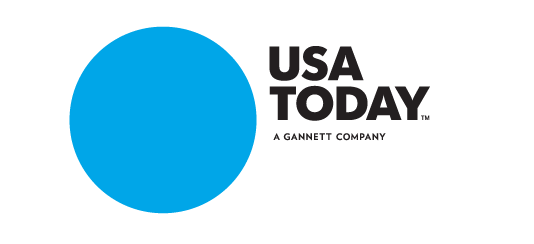Save 50% on a 3-month Digiday+ membership. Ends Dec 5.

USA Today’s recent overhaul of its digital properties has an eye toward making the ad experience, well, less Internet-like.
The new ad approach has reduced the number of ads per page to just one ad on article pages. The ad then stays with the user, who is given the option of closing the ad. USA Today is placing full-screen interstitial ads between sections. Its hope is that this cleaner layout, with more large-format placements, will allow it to charge a significant premium in a digital media world that’s become synonymous with ad commoditization.
“Before the redesign, we had more ads, but they were both smaller ads and not all guaranteed to be viewable (and, thus, they were devalued),” said Gannett chief digital officer David Payne. “All impressions are not created equally, and the calculated risk we are taking is to increase the quality of both the advertising and user experience to drive more revenue.”
It makes the page cleaner while highlighting new viewability standards on the horizon. While Payne said he’d love to get out of the commoditzed banner-ad game, he acknowledged there still needs to be a balance between different types of ad units, even pointing out that USA Today will be rolling out new user-choice products in the fourth quarter.
The ad strategy works in tandem with the new design. On the desktop and tablet browser sites, a user can toggle between the sections and stories without having to use the back button. Gone is the relic of the newspaper industry: box layouts.
“We want to give you the opportunity for a left-right close,” said Payne. “That UI came from mobile; it came from the experience inside the tablet where we get engagement. All of that work we’ve done and product design is to encourage people swiping through and consuming news in that fashion.”
It’s a bold bet, particularly allowing users the option of closing out of ads. There’s always a balance between user needs and those of advertisers, and this one clearly goes in the user direction.
Ad position: web_incontent_pos1
“I don’t mind them reducing the volume of inventory, and I don’t have an issue assuming the eyeballs come and they’re quality,” said Michael Hayes, president of digital at Initiative. “The only concern I have is the ad unit and where it’s currently placed. The user can close the ad unit very easily and close the page. It’s not as advertiser-friendly as it is user-friendly.”
USA Today is also hoping its less-is-more, quality-over-quantity approach will allow it to charge “significantly more” for ad placements. The idea is, like you’ll hear all over nowadays, brands can begin to publish their content on USA Today. It’s an interesting tactic, although it can also be a tough sell to a harried media planner hellbent on meeting CPM goals to plug into a spreadsheet.
Payne said USA Today is going more often to the client directly because it is “bringing all of their great assets into our environment, as opposed to asking someone to look at a banner and click to the site. Clients love that because what they’re trying to do is get people to click on the box to go to their site.”
These larger units give brands more room to provide large-format, magazine-like ads that have the bonus of interactivity and video. For example, it is running a Residence Inn interstitial that lets viewers scroll over room amenities within the ad.
“For the larger units that are on the page or interstitials, we would agree, [they] are better than the straight standard banners that populated the Web for years and still do today,” Hayes said. “It gives us more landscape to work with than the standard ad unit, and that’s good.”
Ad position: web_incontent_pos2
For USA Today, that means taking cues from newer, tech-oriented players in publishing, such as Flipboard, which have rethought how content should be delivered in a multiscreen, touch-navigated world.
“That’s where we think we’ll win, rather than try to improve click-throughs from .01 to .02,” Payne said.
More in Media

Digiday+ Research Subscription Index 2025: Subscription strategies from Bloomberg, The New York Times, Vox and others
Digiday’s third annual Subscription Index examines and measures publishers’ subscription strategies to identify common approaches and key tactics among Bloomberg, The New York Times, Vox and others.

From lawsuits to lobbying: How publishers are fighting AI
We may be closing out 2025, but publishers aren’t retreating from the battle of AI search — some are escalating it, and they expect the fight to stretch deep into 2026.

Media Briefing: Publishers turn to vertical video to compete with creators and grow ad revenue in 2026
Publishers add vertical video feeds to their sites to boost engagement, attract video ad spend and compete with news creators.
Ad position: web_bfu


